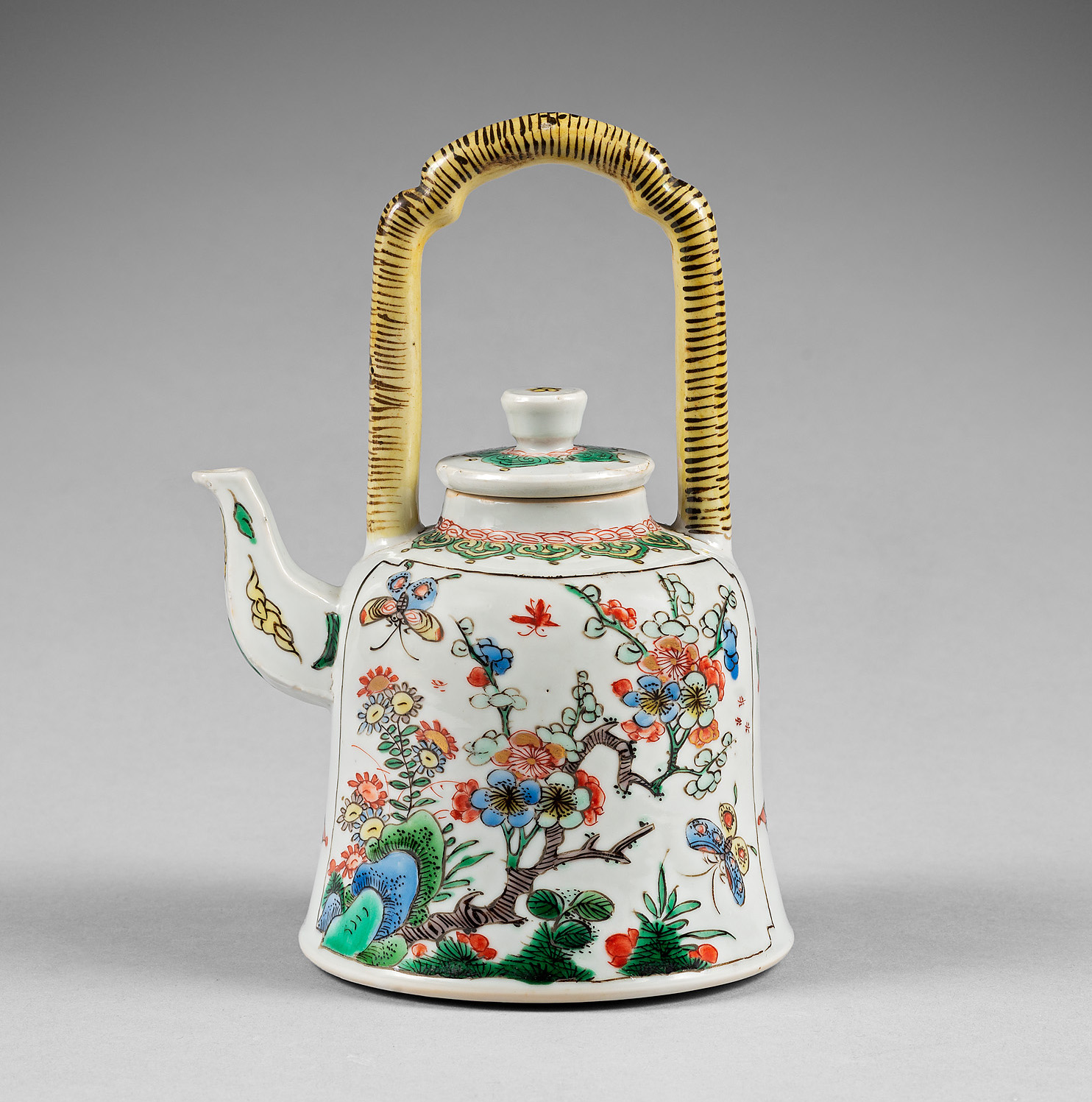
An unusual blanc-de-chine buddhist lion joss-stick holder. Kangxi
An unusual blanc-de-chine buddhist lion joss-stick holder, sitting on its hindquarters and playing with a brocade ball with its two paws. The sculpture on high, hollow, rectangular base, incised with branches of peonies.
- Country:
- China (Dehua)
- Period :
- Kangxi (166-1722)
- Material:
- Porcelain
- Dimension:
- 5.51 in. (14 cm)
- Reference :
- E065
- Status:
- sold
Provenance
Marchant, London
From an important European collection
Related works
Originally made for the domestic market in various size and glazes, Buddhistic lions became popular in Europe in the eighteenth century. The lion is not indigenous to China, it was introduced throughout Indian Buddhism and became a classic theme in Chinese art. From the Ming dynasty, Buddhistic lions, often called Dogs of Fô or Dogs of Buddha, appear in Chinese art and are also used as “guards” of Buddhist temples. Buddhistic lions reached their zenith of popularity early on in the Kangxi period (1662-1722) as the interest in Buddhism showed a marked increase in China.
The plentitude of these animated beasts at the time denoted their integral role in Chinese iconography. Symbolically the lions connote bravery and loyalty; these mythical creatures also appeared on military badges of the first and second rank.
Made to hold an incense stick or taper, they were often scattered on dining tables as decoration in Europe.

























